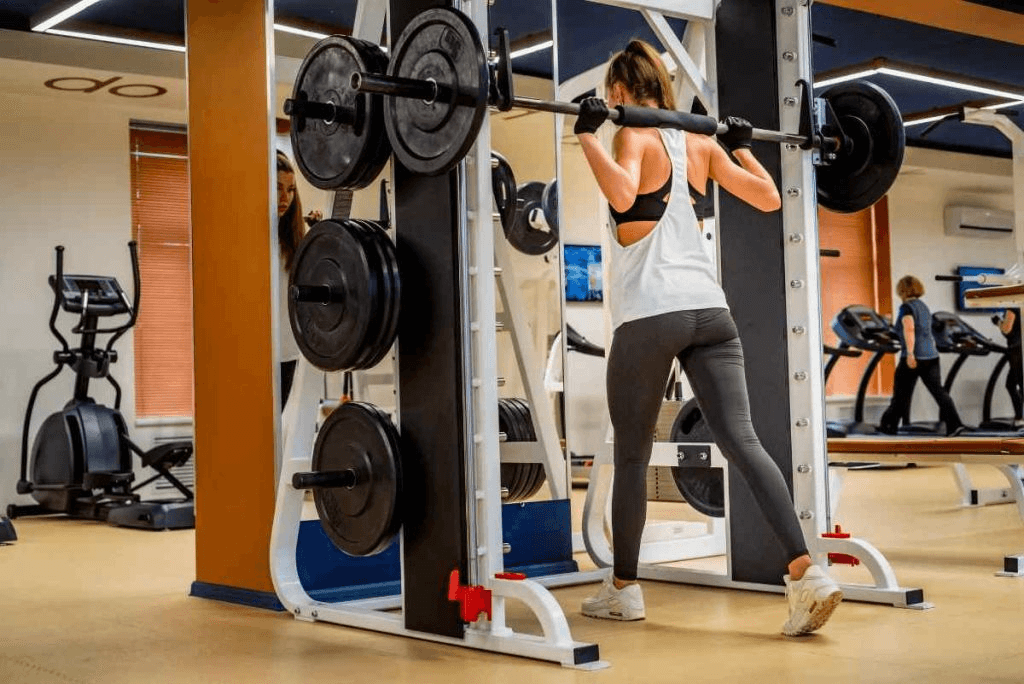When you want to build stronger, rounder glutes while protecting your lower back, the incline glute bridge is one of the simplest yet most effective exercises you can add to your lower body routine. Unlike the standard floor glute bridge, performing this movement with your shoulders on an elevated surface increases the range of motion, allowing your glutes to work harder during each rep.
To perform the incline glute bridge, place your upper back on a sturdy bench or plyo box with your feet flat on the floor, hip-width apart. Drive through your heels as you lift your hips toward the ceiling, squeezing your glutes at the top while keeping your core braced. Lower under control before repeating for your desired reps. This variation not only enhances glute engagement but also improves your hip extension, benefiting your squats and deadlifts over time.
Why Try the Incline Single Leg Glute Bridge?
If you’re looking to challenge your stability and isolate each glute, the incline single leg glute bridge is a natural progression. By removing one foot from the floor, you force each side of your body to work independently, addressing muscle imbalances and boosting hip stability.
Set up as you would for the incline glute bridge, but extend one leg straight while keeping your other foot planted. Drive through the heel of your grounded foot, lifting your hips and extended leg together until your body forms a straight line from shoulders to toes. Keep your hips square to the ceiling and avoid letting one side dip lower than the other.
Not only does this exercise fire up your glutes, but it also challenges your hamstrings and core, making it an efficient addition to your lower body days.
Single Leg Incline Bridge: Precision for Strength and Stability
The single leg incline bridge is another term often used for the incline single leg glute bridge, emphasizing the focus on unilateral training and core engagement. This movement is especially useful for runners, lifters, and anyone seeking to improve functional lower body strength.
While it may feel humbling at first due to the balance demands, mastering this exercise will translate into better hip stability, healthier knees, and a stronger posterior chain, which is vital for both athletic performance and daily activities.
Personal Note on Using Incline Glute Bridges
Incorporating incline glute bridges into my weekly routine has been a game-changer, especially during periods when heavy barbell hip thrusts felt taxing on my lower back. By focusing on higher reps and slower negatives with incline single leg glute bridges, I noticed improved muscle activation and glute development without unnecessary strain.
If you’re struggling to “feel” your glutes during your lower body workouts, adding 3–4 sets of incline glute bridges or single leg incline bridges can help you build the mind-muscle connection you need for effective training.
Tips to Get the Most Out of Your Incline Glute Bridges
-
Warm up properly: Loosen your hips and activate your glutes with banded lateral walks before performing incline glute bridges.
-
Focus on your glutes, not your lower back: If you feel your lower back taking over, check your pelvic position and avoid overextending at the top.
-
Control the tempo: Pause at the top of each rep for 1–2 seconds, then lower slowly to maximize glute tension.
-
Progress gradually: Master both feet first before progressing to the single leg version to avoid compensation patterns.
-
Consistency is key: Incorporate these exercises 2–3 times a week within your lower body or glute-focused training blocks for the best results.
In summary, the incline glute bridge, incline single leg glute bridge, and single leg incline bridge are simple but powerful tools for glute growth, stability, and strength. Whether you train at home or in the gym, these exercises help you maximize your glute development safely and efficiently, building a strong foundation for all your athletic and daily movements.










































Leave a comment
This site is protected by hCaptcha and the hCaptcha Privacy Policy and Terms of Service apply.